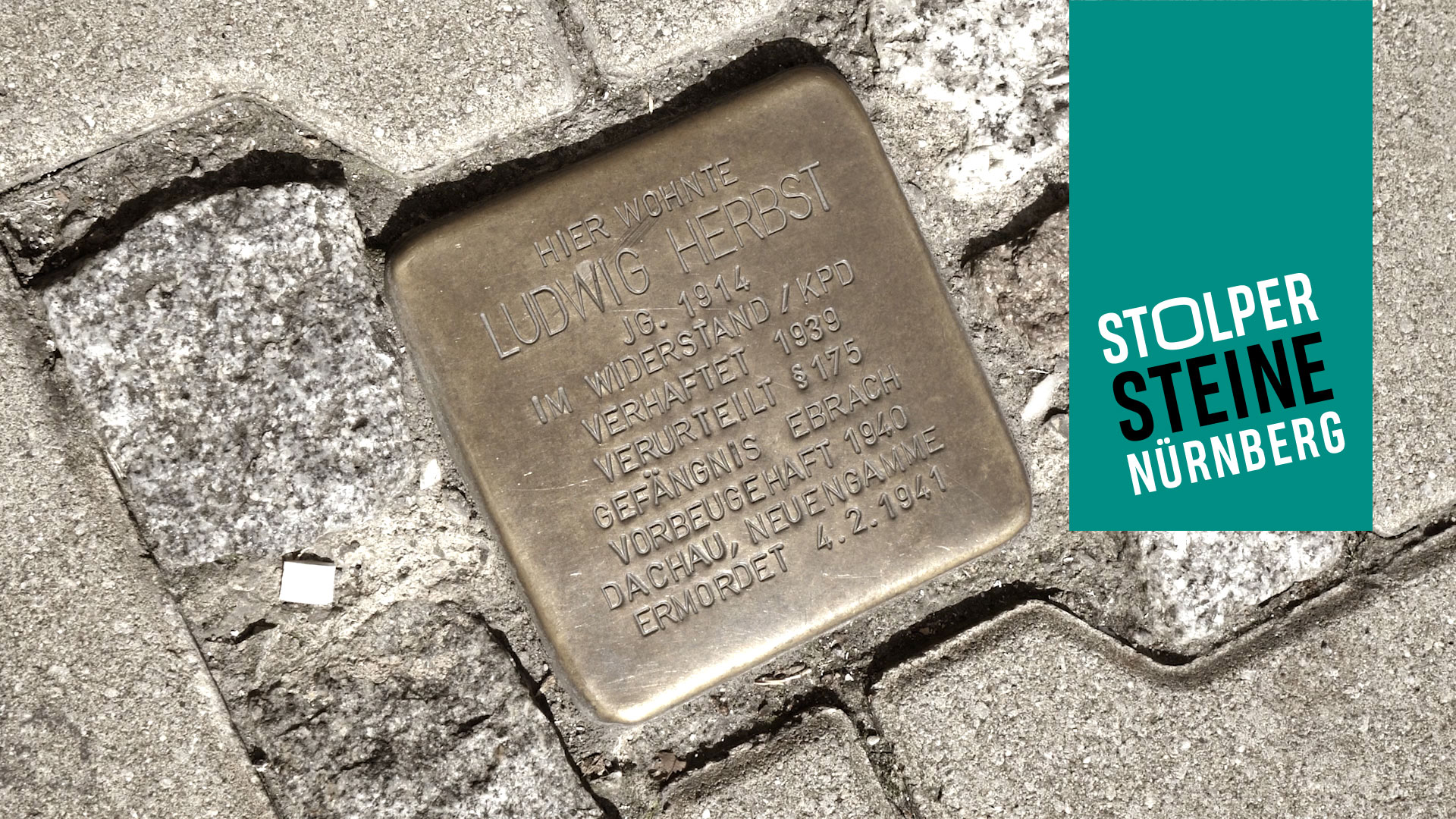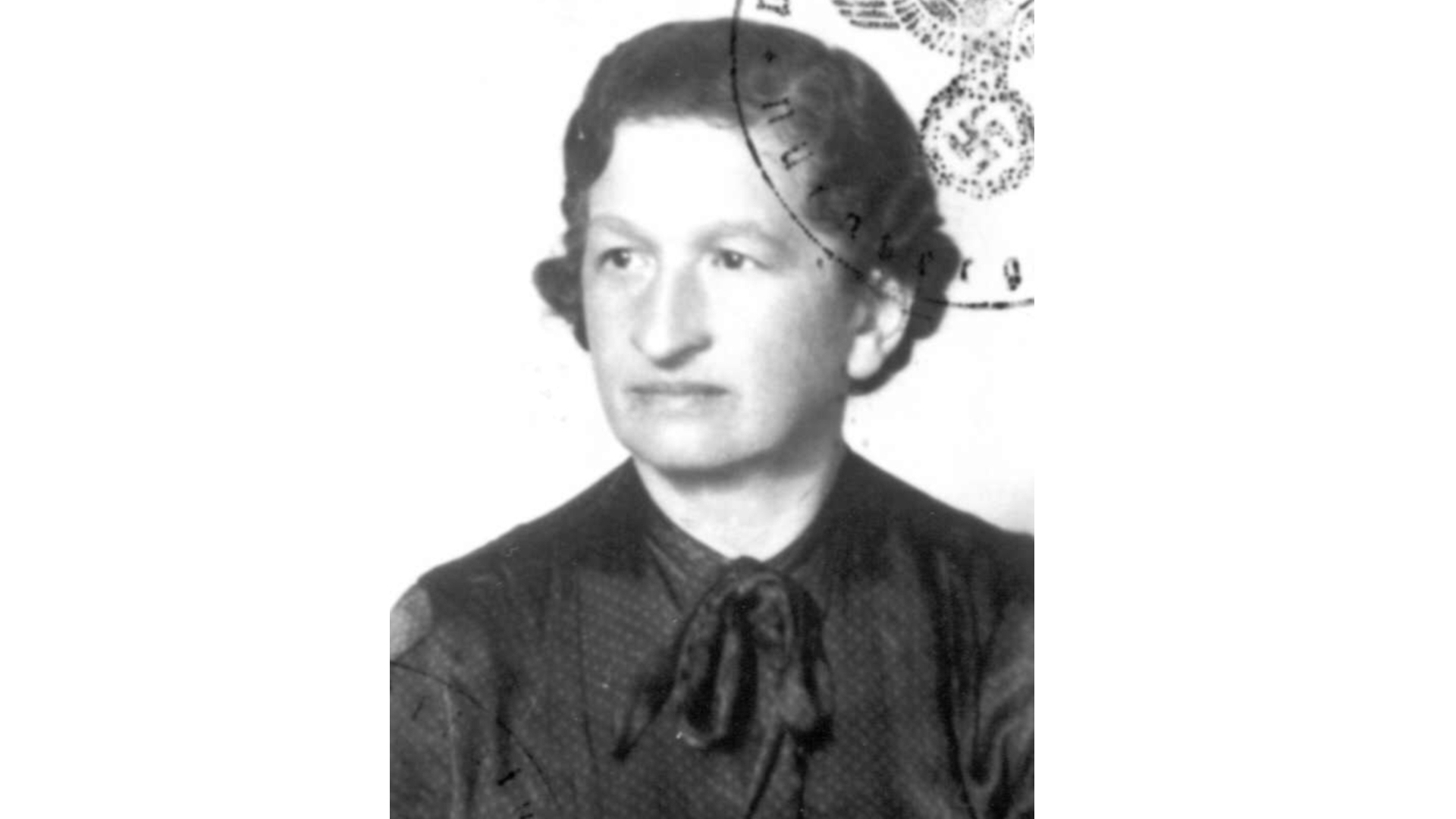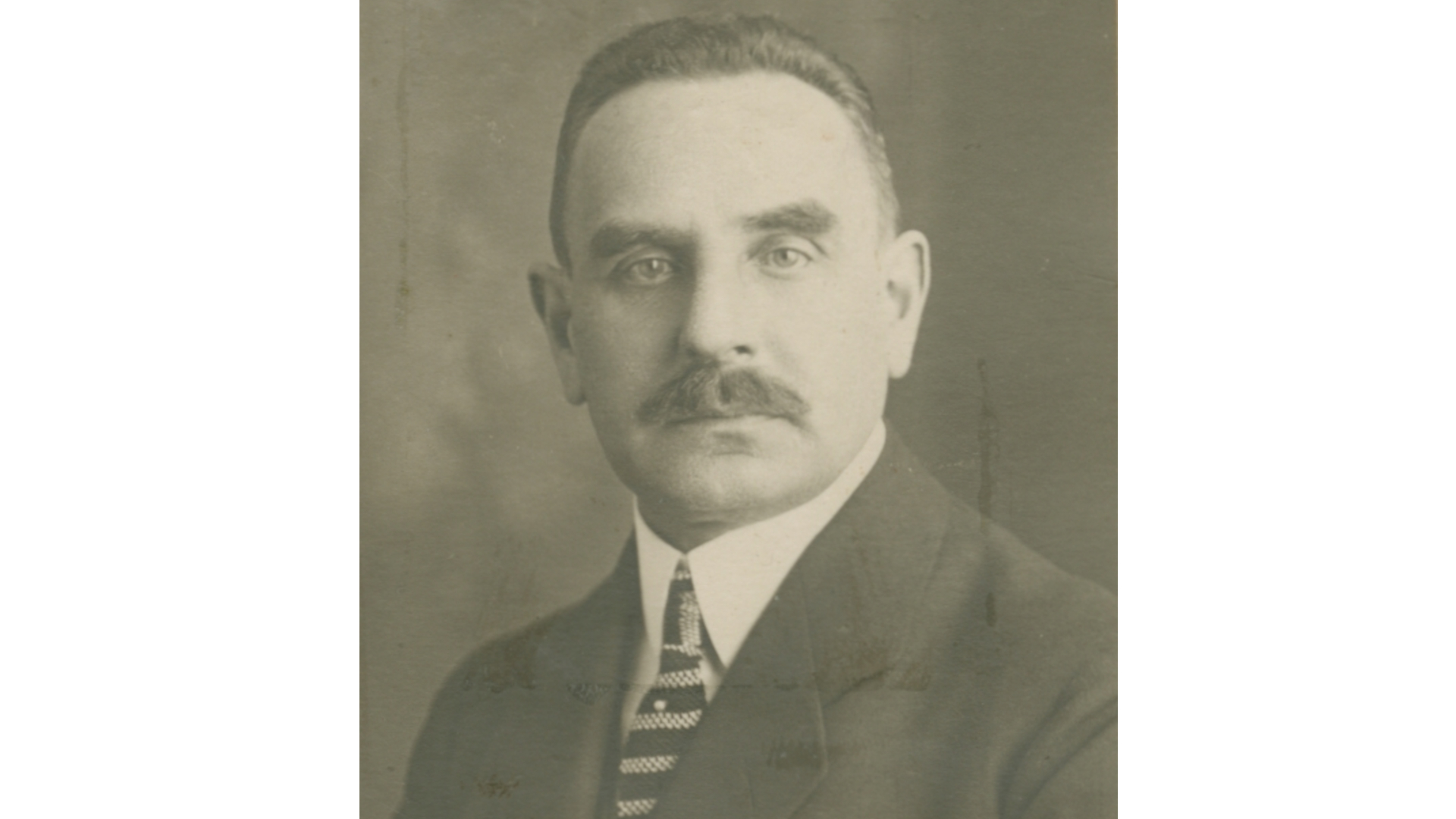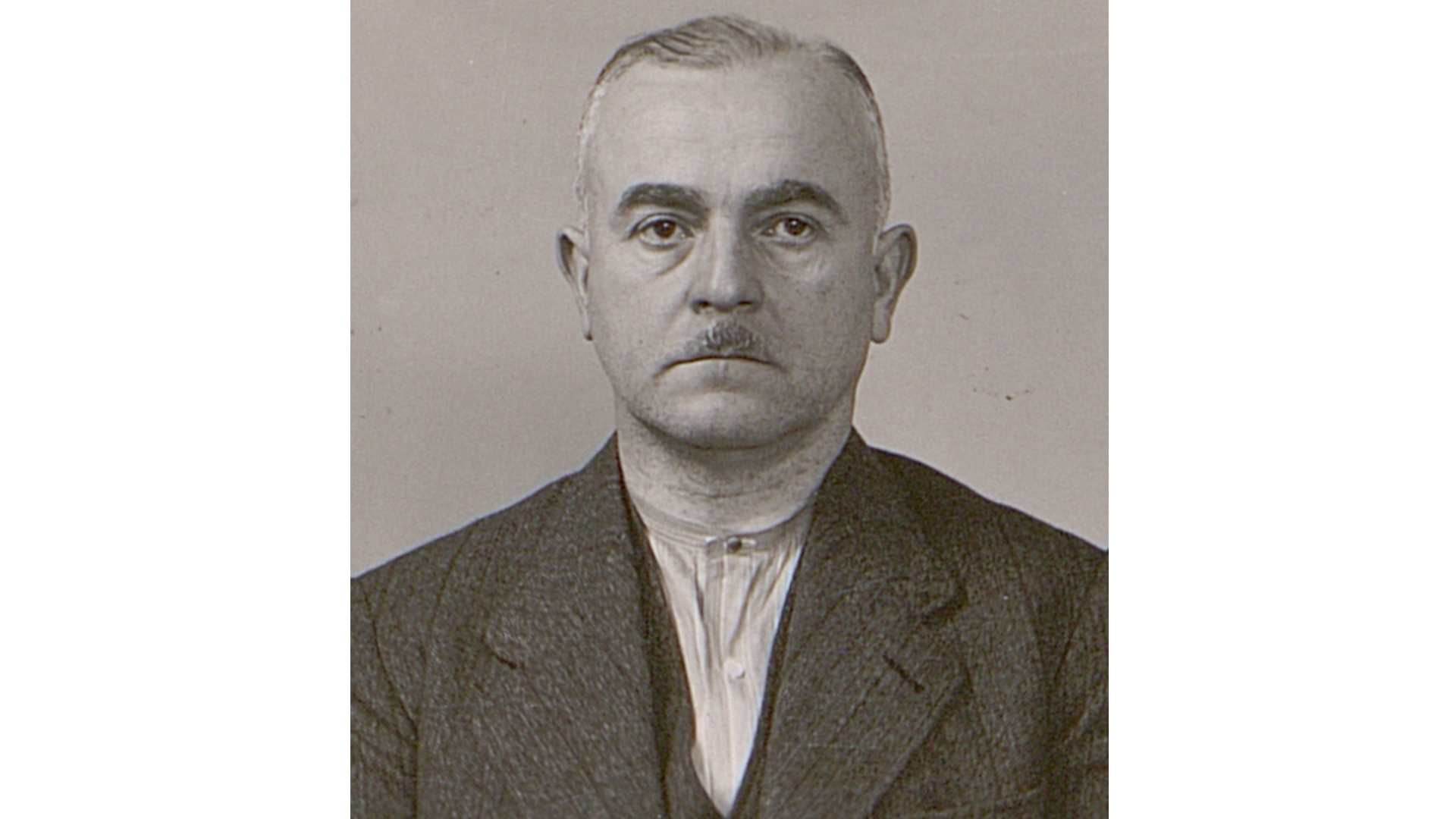| Location of stone: Throughfare to Tuchmacherzwinger at Dr.-Kurt-Schumacher-Strasse 16 (formerly Nadlersgasse 10) | District: St. Lorenz |
| Sponsor: Dr. Ulrich Blaschke | Laying of stone: 6 November 2019 |
Biography
On 6 November 2019 Gunter Demnig laid four stumbling stones for homosexual victims of National Socialism in Nuremberg. Dr. Ulrich Blaschke sponsored the laying of the stone for Ludwig Herbst, who was murdered in Neuengamme concentration camp.
Ludwig Herbst was born on 26 October 1914 in Nuremberg. He was the youngest of five sons of the locomotive fireman Johann Herbst and his wife Katharina (née Christan). Die family was Lutheran.
After leaving school, Herbst started an apprenticeship as a girdle maker. He discontinued the training and eked out a living at first as a labourer. At the beginning of the 1930s Herbst was constantly moving house in Nuremberg and often left the city altogether, to return a few weeks later. He informed the city administration that he earned his living as an artist. Working with a circus or at fairs could explain his frequent change of location.
Initially, Herbst appeared on Nuremberg police records not as a result of his sexual orientation but because of his political activities. He said at a later date that friends had introduced him to the youth organisation of the KPD (German Communist Party). The KPD, for which Ludwig was active politically and distributed leaflets, was prohibited by the National Socialist regime. However, it remains unclear what sentence he was given for his involvement.
At the end of November 1939, Herbst met a 33-year-old man at the Sterntor in the inner city of Nuremberg, subsequently spending the night with him in his apartment. Only a few days later, this resulted in both men becoming the object of police investigations, leading in turn to charges being brought before the Nuremberg-Fürth regional court. The trial which followed started in January 1940. Herbst was convicted and sentenced to ten months in prison.
Initially, he was an inmate in Ebrach Prison, but was then transferred to the jail in Rodgau in Upper Hesse. By the end of 1940 Herbst had actually served his sentence. However, he was not released but sent instead to a concentration camp for an indefinite period, Nuremberg’s criminal investigation department having evidently decided to place him under preventive custody.
In January 1941 Herbst was a new arrival at Dachau concentration camp. That same month he was transferred to Neuengamme concentration camp near Hamburg, infamous for its inhumane living and working conditions. He died there on 4 February 1941, less than two weeks after his arrival. He was 26 years old.









